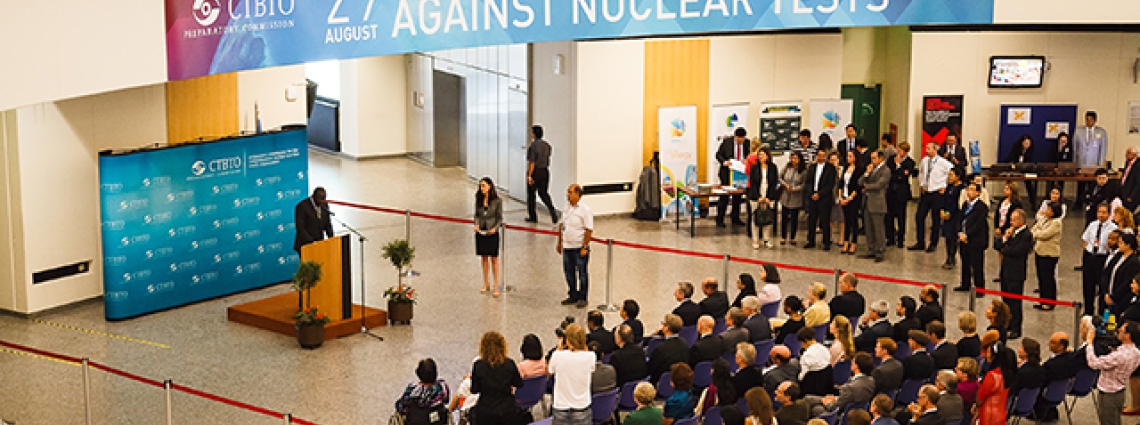Marking the International Day against Nuclear Tests in Vienna
Vienna, 29 August 2014
“It is my sincere hope that the International Day against Nuclear Tests and today's reception will further enhance existing global efforts to bring attention to the necessity of ensuring the early entry into force of the Comprehensive Nuclear-Test-Ban Treaty in the interests of sustainable peace and security,” Ambassador Kairat Sarybay, the Permanent Representative of Kazakhstan to the International Organizations in Vienna, said.
In December 2009, the United Nations General Assembly unanimously declared 29 August as the International Day against Nuclear Tests (see message from United Nations Secretary-General Ban Ki-moon. The message is also available as PDF in Arabic , Chinese , French , Russian and Spanish ).
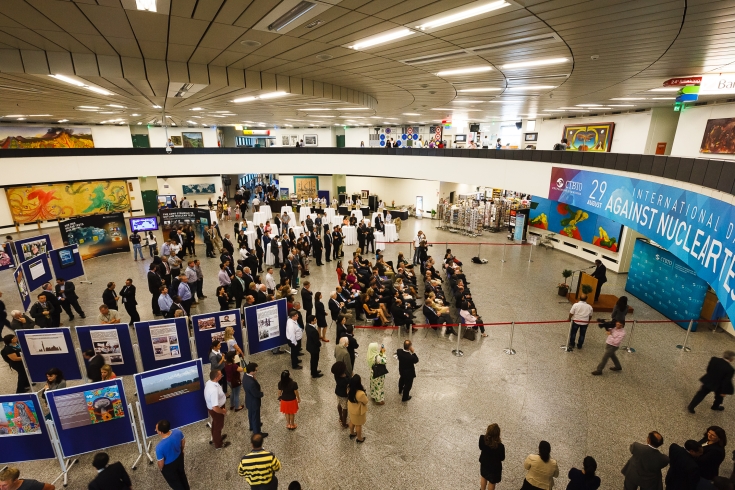
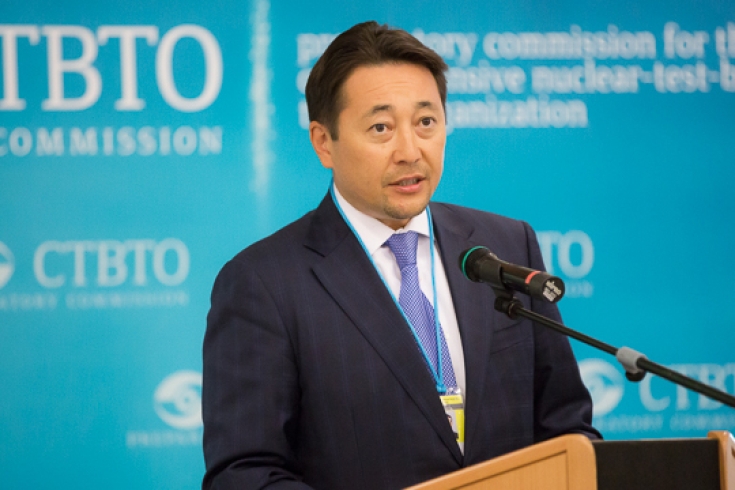
As Secretary-General, I have had many opportunities to meet with some of the courageous survivors of nuclear weapons and nuclear tests in Hiroshima, Nagasaki and Semipalatinsk…On this International Day against Nuclear Tests, let us all take a fresh look at those survivors’ stories. Listen to their words and imagine the effects of these detonations as if they were experienced by each of us. Only then can we better understand the imperative to renew our commitment to a world free of nuclear weapons and nuclear tests.
Speaking at the event, CTBTO Executive Secretary Lassina Zerbo said: “The CTBT is a collective measure by the international community to not only prevent further threats, but to contribute to a world free of nuclear weapons.”
Read the full statement of the CTBTO Executive Secretary here .
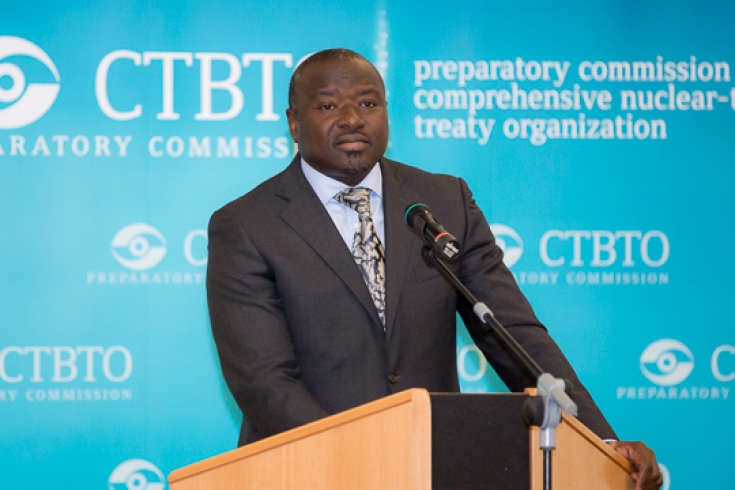
CTBTO Executive Secretary Lassina Zerbo
Today, the Comprehensive Nuclear-Test-Ban Treaty (CTBT) represents an international norm against nuclear testing. However, it has not yet entered into force. Today serves as a reminder that banning nuclear testing remains unfinished business.

Malaysia's Ambassador and Chairperson of the CTBTO Preparatory Commission, Selwyn Das.
Raising awareness about the effects of nuclear testing through art
The exhibition featured the ‘Doomtown’ series by Doug Waterfield, Professor of Art at the University of Nebraska at Kearney, USA. The series depicts the phenomenon of atomic culture and the intense psychological symbol of the mushroom cloud.
"I first became interested in atomic testing after visiting the Nevada Test Site. I was particularly interested in the ‘survival towns’, also known as ‘Doomtowns’", explained Waterfield. “They were recreations of what was considered to be the quintessential American town in the 1950s, populated by mannequins, and then lit up by atomic blasts to see what the effects would be. - Many people are not aware of the details of what actually occurred during the tests. That’s one of the driving forces behind my work – educating the public.”
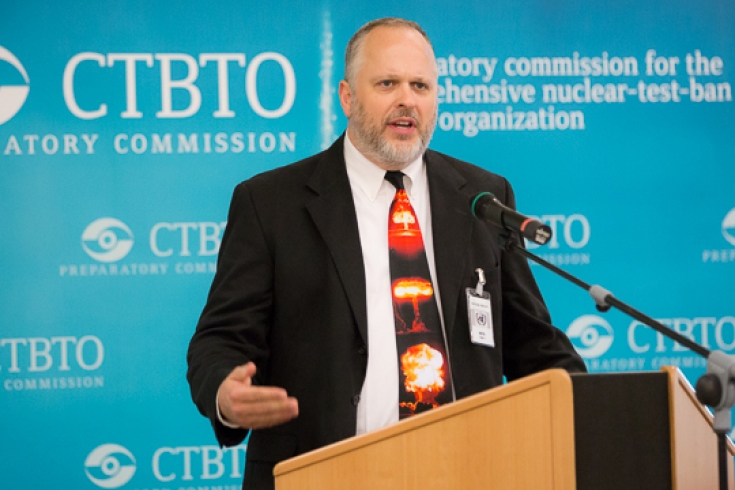
The artist, Doug Waterfield
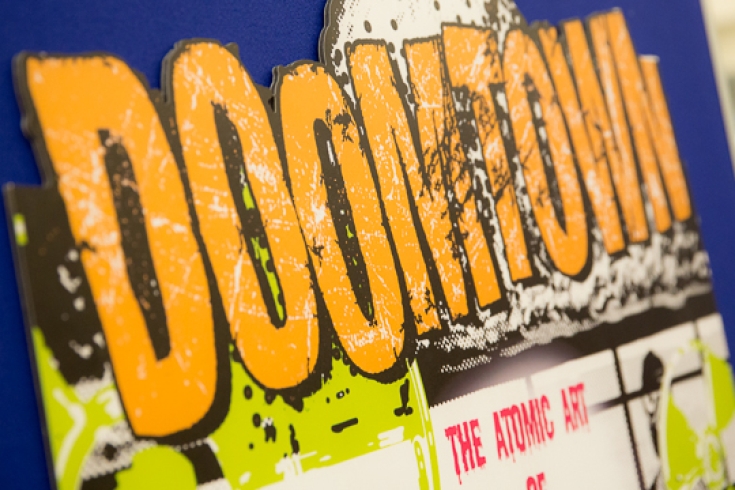
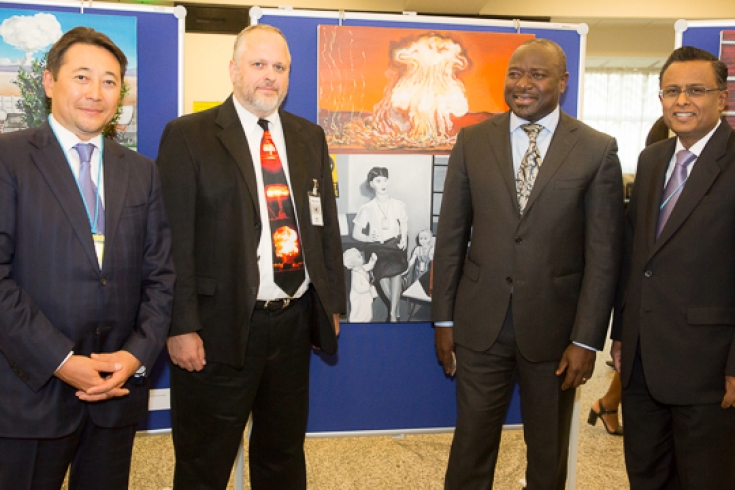
“From 1949 to 1989 the Semipalatinsk Nuclear Test Site was the Soviet Union's prime venue for conducting about 500 nuclear weapons tests over an area of approximately 18,000 sq.km,” Sarybay said. “To give you another depiction of this tragic page in Kazakhstan's history, imagine that for four decades, an area roughly the size of Austria's largest state Niederösterreich and 1.5 million unsuspecting people living in it were exposed to devastating levels of radiation, the effects of which are still borne today by current generations.”
Preventing the harmful effects of nuclear testing
According to the UN Resolution establishing it, the International Day against Nuclear Tests aims to prevent more of the “devastating and harmful effects on the lives and health of people and the environment” caused by nuclear testing.
Over 2,000 nuclear tests have been conducted since the very first nuclear explosion, the Trinity test on 16 July 1945 in New Mexico, United States. Together, the fallout from these tests dwarfed the amount of radioactivity released into the environment from any nuclear accident.
The Comprehensive Nuclear-Test-Ban Treaty (CTBT) is the international instrument to end all nuclear testing in a verifiable way. Since the CTBT was opened for signature in 1996, only a handful of nuclear tests have been conducted (by India, Pakistan and the Democratic People’s Republic of North Korea – the DPRK). All of these tests received universal condemnation and UN Security Council sanctions were adopted unanimously against them.
Currently 183 States have signed the Treaty and 162 have ratified it. However for the CTBT to enter into force, eight States - from a list of 44 defined as nuclear technology holders - have yet to ratify to meet the Treaty’s stringent entry into force requirement: China, DPRK, Egypt, India, Iran, Israel, Pakistan and the United States.
Other events to commemorate this year's International Day against Nuclear Tests
The UN General Assembly in New York, United States, will hold a special meeting to mark the International Day on 10 September 2014.
In addition, the CTBTO Executive Secretary is participating in a special event entitled “Nuclear Weapons Testing: History, Progress, Challenges” in Washington, D.C., USA on 15 September. The event is being co-organized by the Permanent Missions of Kazakhstan and Canada to the United Nations in New York as well as the Arms Control Association. Other speakers will include the following: U.S. Secretary of Energy Ernest Moniz; U.S. Under Secretary of State for Arms Control and International Security, Rose Gottemoeller; and U.S. Under Secretary of Energy and Administrator for the National Nuclear Security Administration, Frank Klotz.
29 Aug 2014
